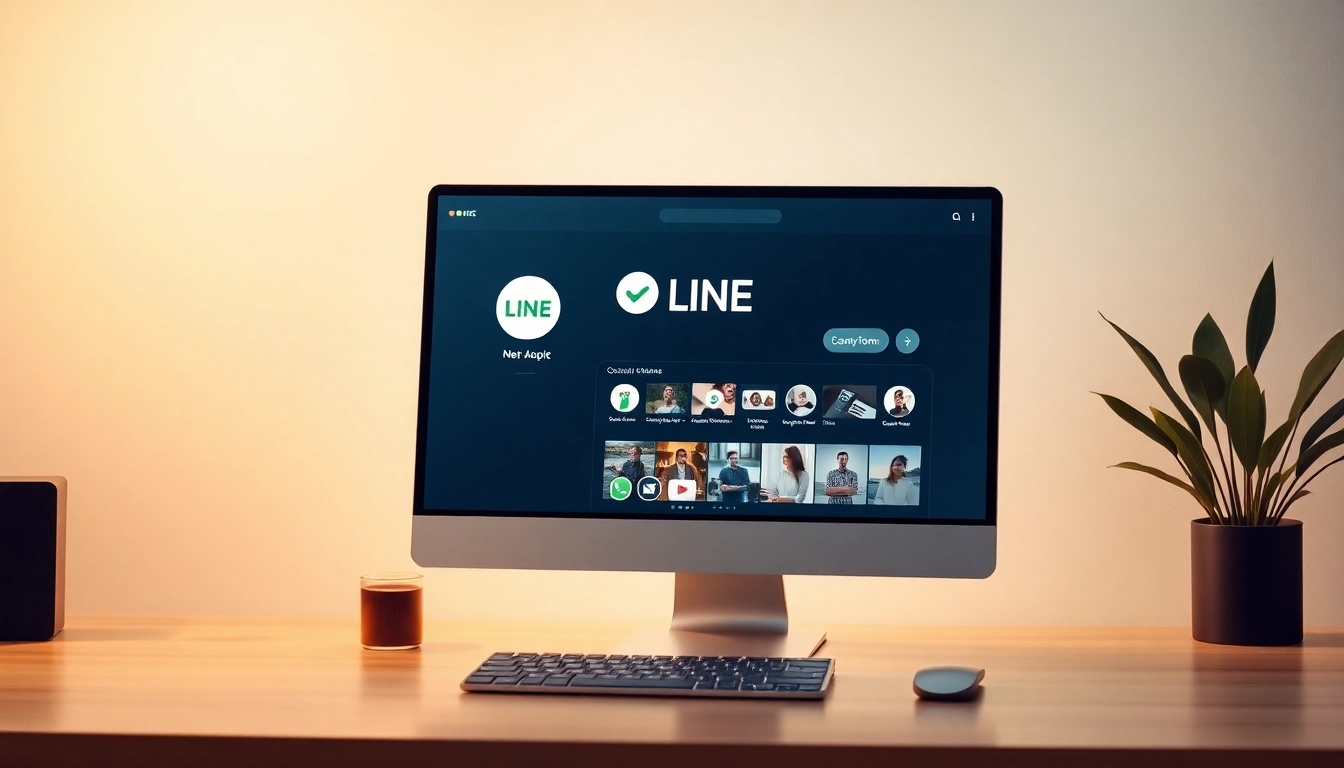The Fundamentals of Website Design
In the rapidly evolving world of digital interfaces, understanding the fundamentals of website design is paramount for both novice designers and seasoned professionals. Design is not merely about aesthetics; it encompasses a multitude of skills and disciplines in the creation and management of websites. From crafting visually appealing layouts to ensuring seamless user interactions, the components of effective web design are varied and interconnected.
Understanding Key Principles
At its core, website design must adhere to several key principles that ensure a successful user experience. These include:
- Clarity: A web page should communicate its purpose clearly. Well-defined navigation and informative content contribute to this clarity.
- Consistency: Elements like colors, fonts, and layouts should be consistent across all pages. This fosters a cohesive brand identity and improves usability.
- Accessibility: Websites must be designed for all users, including those with disabilities. This involves using appropriate contrast, alt text for images, and semantic HTML.
- Responsive Design: With the variety of devices available today, responsive design ensures that a website looks and functions well on all screen sizes, adapting elements as necessary.
Essential Tools and Technologies
Designers have access to a plethora of tools and technologies that aid in the website design process. These include:
- Website Builders: Platforms like WordPress, Wix, and Squarespace streamline the design process with user-friendly templates and drag-and-drop features.
- Graphic Design Software: Applications like Adobe Photoshop and Illustrator enable designers to create visual elements and mockups.
- Development Tools: Knowledge of HTML, CSS, and JavaScript is crucial for customizing functionalities and layouts beyond what template builders offer.
- Prototyping Tools: Tools such as Figma and Adobe XD allow designers to create interactive prototypes, enhancing collaboration and client communication.
Common Challenges in Website Design
Website design isn’t without its challenges. Key obstacles include:
- Balancing Aesthetics with Functionality: Designers often struggle to find the right balance between visual appeal and user-friendly navigation.
- Keeping Up with Trends: The digital landscape changes rapidly, making it essential for designers to stay updated on latest design trends and technologies.
- Client Expectations: Clear communication with clients is essential to ensure that their vision aligns with design feasibility and user experience best practices.
- SEO Considerations: Integrating SEO into the design process requires knowledge of how design elements affect search engine rankings.
Creating a User-Centric Website Design
A successful website design places users at the heart of the process. This involves understanding their needs, preferences, and behaviors.
Importance of User Experience (UX)
User experience (UX) refers to how a user interacts with a website. A positive UX includes aspects such as:
- Ease of Navigation: Users should be able to find information quickly and intuitively. A well-structured navigation menu aids this process.
- Loading Speed: Websites that load slowly can deter visitors. Optimizing images and utilizing efficient coding techniques can enhance speed.
- Content Quality: Engaging, relevant content keeps users on the site longer and encourages them to return.
User Research Techniques
Understanding your target audience is crucial. Techniques for gathering user insights include:
- Surveys and Questionnaires: These can be distributed to previous users or target demographics to gather feedback on design preferences and pain points.
- User Interviews: Conducting one-on-one interviews can provide deeper insights into the motivations and habits of users.
- Usability Testing: Observing real users interacting with prototypes or existing websites can identify usability issues that may not be evident otherwise.
Designing for Accessibility
Making websites accessible is not just a legal mandate but also a moral obligation. Key aspects include:
- Semantic HTML: Using semantic tags helps screen readers interpret content structure accurately, aiding users with disabilities.
- Alternative Text for Images: This ensures that visually impaired users can understand what images represent.
- Keyboard Navigation: Enabling full site functionality through keyboard navigation is essential for users who cannot use a mouse.
Visual Elements in Website Design
The visual design of a website significantly impacts user engagement and brand perception. Thoughtful consideration of aesthetics can enhance overall usability.
Choosing the Right Color Schemes
Colors evoke emotions and can influence user behavior. When selecting color schemes, consider the following:
- Brand Identity: Colors should align with the brand’s image and values. For instance, blue often signifies trust, while red conveys excitement.
- Color Contrast: High contrast between text and background improves readability. Always test color combinations for accessibility.
- Color Psychology: Understanding how colors affect emotions can guide users’ actions and decisions.
Typography Best Practices
Typography plays a critical role in website design, as it affects readability and user engagement. Consider the following best practices:
- Font Selection: Choose typefaces that reflect the brand’s personality while ensuring legibility. Serif fonts often convey tradition, while sans-serif fonts appear contemporary.
- Hierarchy: Use different font sizes and weights to establish a visual hierarchy, guiding users through the content effectively.
- Line Spacing and Length: Proper line spacing improves readability. Aim for 1.5 line height and limit line length to around 60 characters.
Utilizing Images and Graphics Effectively
Images and graphics enhance visual appeal and support text content. Best practices include:
- High-Quality Images: Use sharp, professional images. Blurry or pixelated visuals hurt credibility.
- Relevant Graphics: Images should relate to the content and enhance the user experience, not detract from it.
- Optimization: Compress images to reduce loading times while maintaining quality. Tools like TinyPNG can assist in this process.
Responsive Website Design Strategies
With the growing use of mobile devices, responsive design is more crucial than ever. Designing for multiple devices involves a strategic approach.
The Need for Mobile Optimization
Considering that over half of web traffic comes from mobile devices, it’s essential to ensure mobile optimization through:
- Fluid Grids: Use a fluid layout that adjusts elements according to screen size rather than fixed-width designs.
- Responsive Images: Utilize CSS techniques like `max-width: 100%` to ensure images resize within their containing elements.
- Touch-Friendly Elements: Ensure buttons and links are easily clickable on smaller screens, with sufficient spacing to avoid accidental clicks.
Cross-Device Compatibility
Designing for compatibility across various devices involves:
- Testing on Multiple Platforms: Regularly test designs on a variety of devices and browsers to identify and resolve compatibility issues.
- Viewport Settings: Use viewport meta tags to control layout on mobile browsers, ensuring a consistent experience across devices.
- Utilizing Frameworks: Frameworks like Bootstrap provide a solid foundation for responsive design, including predefined grid systems and responsive utilities.
Testing and Iteration Processes
Testing is an essential part of the design process. Iterative testing strategies include:
- A/B Testing: Compare different design variations to determine which performs better based on user interactions.
- User Feedback Loops: Incorporate user feedback into the design process to uncover pain points and areas for improvement.
- Analytics Tracking: Employ tools like Google Analytics to monitor user behavior and site performance metrics, utilizing data to inform adjustments.
Measuring Success in Website Design
Finally, measuring the success of a website design is critical for ongoing improvement. This involves identifying KPIs and gathering feedback.
Key Performance Indicators (KPIs)
Establishing KPIs allows for effective assessment of design performance. Common KPIs include:
- Traffic Sources: Understanding where visitors originate can inform future marketing and design efforts.
- Conversion Rates: Measure how many website visitors fulfill desired actions, such as completing a purchase or signing up for a newsletter.
- Average Session Duration: Longer session times typically indicate engaging content and a positive user experience.
User Feedback and Iterative Improvements
User feedback plays a vital role in continuous improvement. Methods for collecting feedback include:
- Feedback Forms: Easily accessible forms on the website encourage users to share their experiences and suggestions.
- Heat Mapping Tools: Utilize tools to visualize user interactions on the site, highlighting areas of high engagement.
- Social Proof: Collecting and showcasing testimonials can provide qualitative insight into user satisfaction.
Staying Updated with Design Trends
Website design is an ever-changing field, necessitating continual learning and adaptation. Strategies include:
- Participating in Design Communities: Joining forums, online communities, and tutorials can help designers exchange ideas and stay informed.
- Following Industry Leaders: Subscribing to newsletters and following prominent designers on social media can provide insights into emerging trends.
- Regularly Reviewing User Analytics: Continually analyze usage statistics to identify trends in user behavior and adjust design features accordingly.



